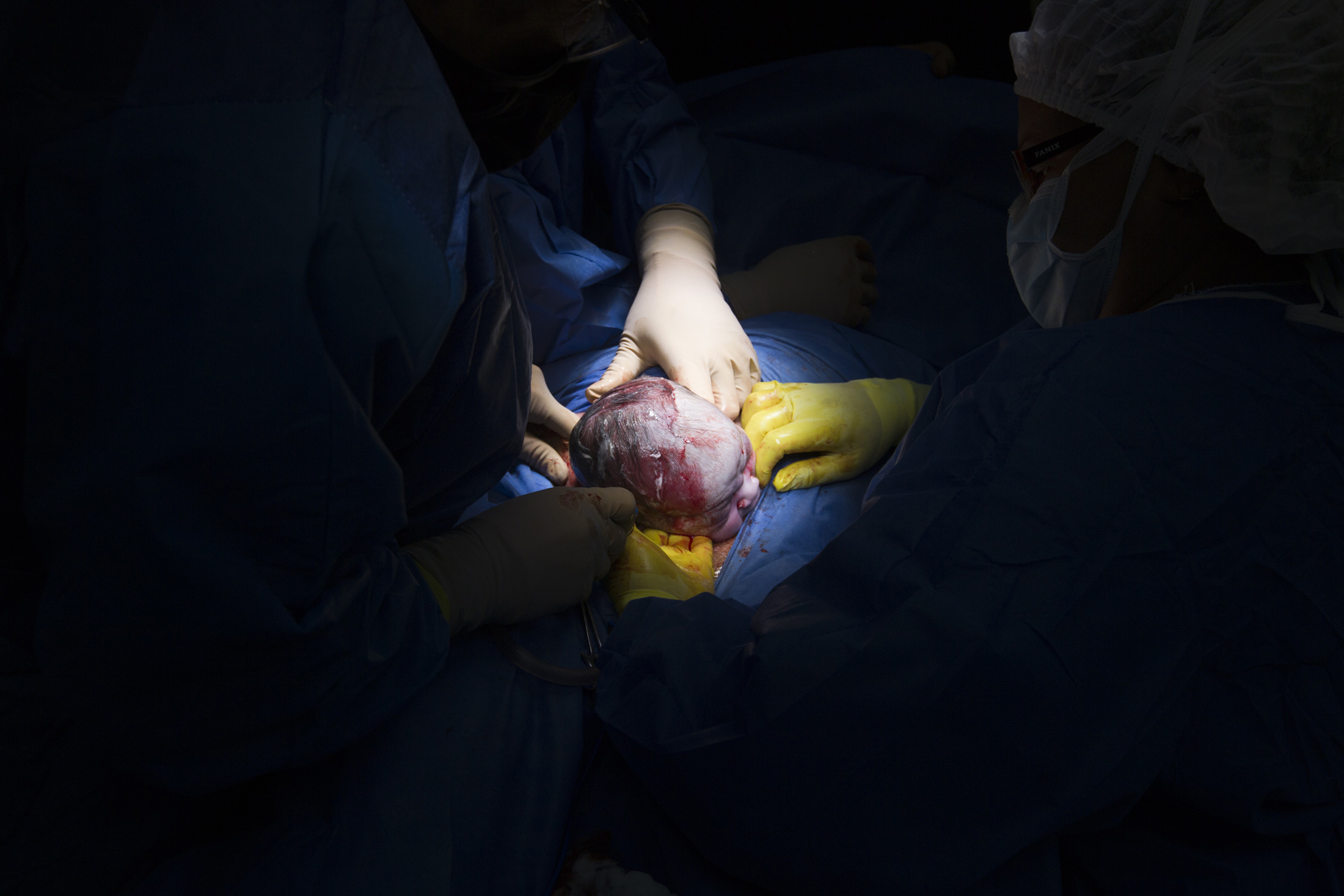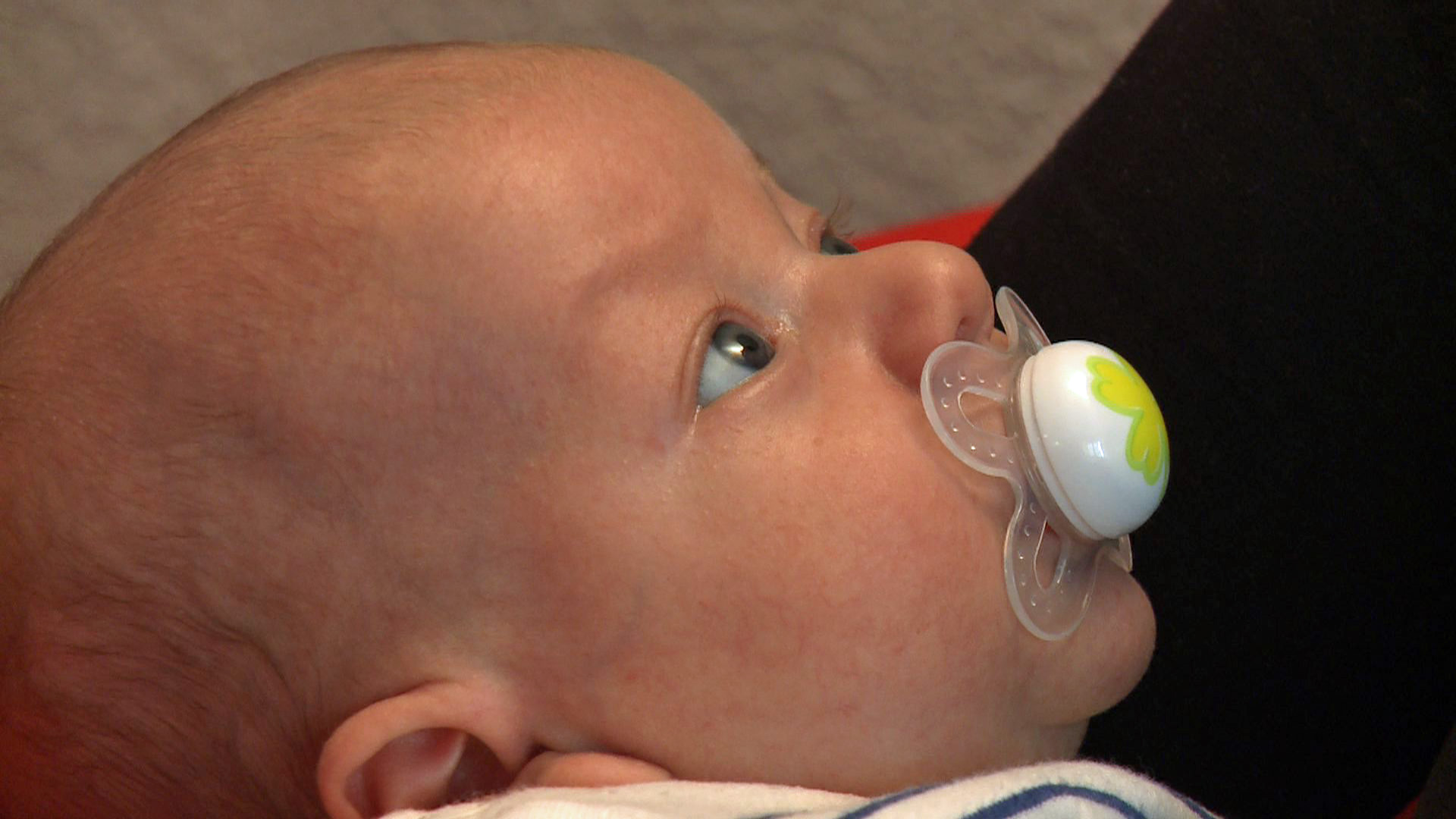C-section rates create a stir

Every third child in Switzerland is born by Caesarean section, one of the highest rates in the world. Particularly women in wealthy urban areas with a high density of private clinics request the surgery, a fact which riles critics.
Particularly procedures that are not deemed necessary are causing the divide. It is an emotional issue that has hardened the fronts between advocates and opponents, who cannot even agree whether the current rate is too high or not. So what are the facts?
The lowest C-section rates (19 per cent) are found in rural Jura, the country’s second-poorest region – where there are no private birth clinics, lower numbers of privately insured women and where hospital officials promote natural deliveries.
The highest (43 per cent) is in Zug, the canton with the highest per capita income, according to the Federal Statistical Office.
The numbers suggest that some Caesareans carried out in certain regions are not medically justified, said Doris Güttinger, head of the Swiss Midwives Association. She considers the rate too high, but does not hold it against a woman if she opts for the surgery – even for non-medical reasons – as long as she understands the procedure’s risks for herself and her baby.
In Switzerland, it is up to the mother to decide, but it’s believed she often follows her doctor’s advice. Studies show that only two per cent of women having a section actually wanted it from the start, while 60 per cent said their doctors suggested it, Güttinger said.
“This poses the question whether financial incentives play a role, because you can earn more money with a section,” Güttinger said. The lump sums hospitals are paid per procedure are about 50 per cent higher for C-sections than for natural births.
For Christian Westerhoff, head of clinical services at Hirslanden, the country’s largest private hospital group, the choice is not about money. Caesareans may account for about half of the 1,000 births at his clinics, but they only make up for five per cent of all surgeries. They may generate more sales, but additional expenses weigh on profit, he explains.
Statistics show that women who want a C-section often have private insurance coverage, which entitles them to choose their doctor and hospital – so they may opt for a private clinic. Westerhoff does not consider the Swiss rate too high.
The etymology of the name is disputed. Apparently, Roman emperor Julius Caesar was not delivered through section. The expression may come from the Latin word caedere, which means to chop. The Romans cut out unborn children from the womb of dying women because they could not be buried with child.
Jakob Nufener, who worked as a pig castrator in canton Thurgau around 1500, reportedly performed the first successful Caesarean section in history, where the mother – his wife – survived. The first modern C-sections were recorded in Germany in 1881.
Absolute indications for C-sections are those where a vaginal delivery would put the baby’s or the mother’s life or health at risk. They include traverse positions and placenta praevia.
In recent years, there has been an increase of relative indications (breech position, baby’s head much larger than pelvis, multiple births or traumatisation). Purely elective C-sections are performed without medical necessity at the request of the expectant mother.
Women’s autonomy
For him it merely reflects our civilisation, a need for security and control, a desire to plan work and family life and – last but not least – women’s autonomy. “Safe C-sections are possible thanks to medical advances, and they are a comfort we are prepared to pay for,” he says. “Nobody would consider setting a fracture without anaesthetics today.”
Although Thomas Prätz, head of the gynaecology and birthing unit at Nidwalden cantonal hospital, is an advocate of natural births, he understands why more and more doctors are advising their patients to have C-sections.
“Insurance premiums for assisted births are going up all the time. Obstetricians try to protect themselves, so Caesareans are often chosen for questionable reasons to avoid liability if something goes wrong,” he explained.
As far as Westerhoff is concerned an expectant mother has nine months to make up her mind and discuss the issue with her gynaecologist. “That’s why we will not try and dissuade her,” he said. “We respect a woman’s decision, her fears of being at someone’s mercy or her reluctance to submit to a painful experience.”
The C-section rate at Hirslanden’s eight birth clinics is as high as 55 per cent. At Bern’s Inselspital, the Swiss university hospital with the highest number of high-risk births, the total is 38 per cent, or 25 per cent without high-risk cases, said Daniel Surbek, chief physician for obstetrics. For Güttinger this discrepancy is “striking”.
She is concerned that women are told to have a Caesarean to be on the safe side for the baby, without mentioning the risks. “They are often told that a C-section is safer than a natural birth, but that’s wrong: The risks are actually higher for mother and child,” Güttinger said.
The C-section rate is 33.3% in Switzerland, up from 23% in1998 and 32.6% in 2010. The rates correlate with many factors including wealth, culture, politics and the insurance system.
The Federal Office of Public Health in February 2013 responded to a request by parliamentarian and midwife Maury Pasquier by publishing a report looking into the C-section rates. The office concluded that the causes and effects are difficult to assess and that in the end it is up to the obstetric professionals to decide for or against the procedure.
However, a medical study cited in the report found an increased risk for type one diabetes for children born through C-section. Indications for higher asthma risks were shown in Norwegian and Dutch research.
The Zurich University of Applied Sciences, the Swiss Health Observatory and the Federal Statistical Office also contributed to the report, which outlines the socio-demographic, economic, and medical factors and points out the health and economic consequences of the procedure.
Basic health insurers in Switzerland reimburse hospitals based on a cost weight and a base rate. Natural birth has a cost weight of 0.54 and a Caesarean section 0.83.
Swiss rates are comparable to those in the United States or Germany, according to the Organisation for Economic Co-operation and Development. In Europe, section rates are above 40% in Italy and Portugal, while in Nordic countries they are around 15%, a level considered appropriate by the World Health Organisation.
In many cultures, C-sections are, however, considered the norm. According to the OECD, the record is an average rate of 46 per cent in China. In Mexico, Turkey or Brazil the rate is closer to around one in two, and private clinics often only offer surgery. In South Africa, the rate is 80% in private and 20% in public hospitals. It is so elevated because sections are considered a safer option for women who are HIV positive.
Higher risks?
Midwives warn that medical studies have shown that children born by C-section are more prone to breathing problems, and to diabetes and asthma in the long term. Mothers may also have a higher risk for bleeding, infection and complications in subsequent births.
Some of these findings are disputed. Westerhoff said he considers the risk of a planned Caesarean comparable to that of a uncomplicated natural delivery – thanks to medical progress.
And, a vaginal birth is not without risk. Women may tear badly or suffer pelvic organ prolapse, and the baby could be harmed during forceps or vacuum extraction.
The government, which commissioned a report (see infobox) to look into the C-section rate, said in February that the causes and effects could not be conclusively assessed because of complex interactions.
Researchers from the Zurich University of Applied Sciences, who contributed to data used by the report say more political will is necessary to achieve any changes. Sociologist Claudia König and Jessica Pehlke-Milde, a former midwife, urge for measures to lower the rate: Births should increasingly be led by midwives, doctors should reconsider guidelines, and women should ask for a second opinion if recommended a section, König said.
Not an illness
“Doctors are not supported to opt for vaginal birth in cases of doubt. [Medical personnel] need experience with vaginal deliveries, or we’ll unlearn how to do more complex cases,” Pehlke-Milde said. “It should be our goal that women feel that birth is natural and not an illness that needs to be medicated.”
For König the reasons for the high rates are clear. “C-sections clearly correlate with the head physician’s convictions and the clinic’s culture. Some private doctors do not even offer vaginal births.”
The Inselspital’s philosophy is to promote natural birth whenever possible and medically acceptable. As a result the rate for procedures on request without medical reason is below two per cent. “I will personally and thoroughly inform women who request a C-section about the short-term and long-term risks,” Surbek said.
Those who stick to their choice were sometimes traumatised by a previous birth or are concerned about impaired sexual function, but also lifestyle and social trends may play a role, he said.
The choice for or against a Caesarean is very personal. Two out of three women still deliver their babies naturally.

In compliance with the JTI standards
More: SWI swissinfo.ch certified by the Journalism Trust Initiative

You can find an overview of ongoing debates with our journalists here. Please join us!
If you want to start a conversation about a topic raised in this article or want to report factual errors, email us at english@swissinfo.ch.